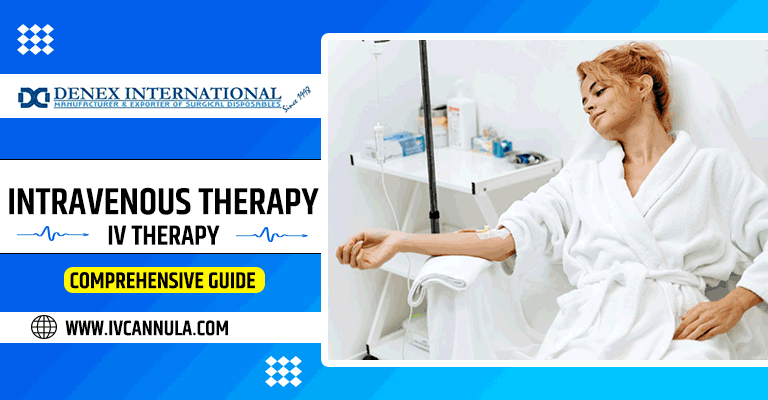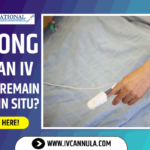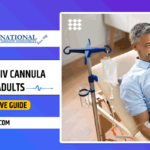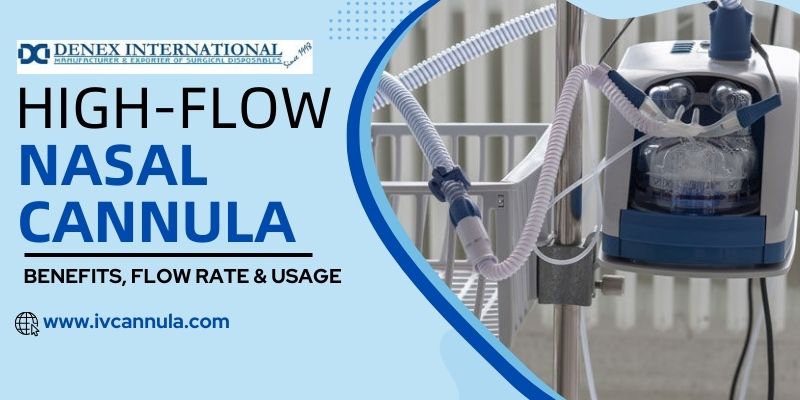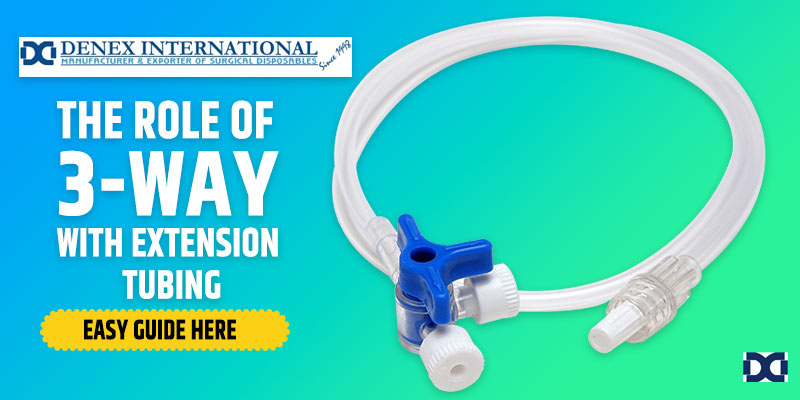In modern healthcare, where advancements continuously push the boundaries of medical science, one therapeutic method has stood the test of time. It continues revolutionizing patient care: Intravenous Therapy, commonly known as IV Therapy. This indispensable medical technique involves the administration of fluids, medications, and nutrients directly into the bloodstream through a vein, offering a swift and effective way to deliver crucial elements that contribute to healing and well-being.
As we delve into the intricate world of Intravenous Therapy, this comprehensive guide aims to unravel the mysteries surrounding this medical marvel. Whether you’re a healthcare professional seeking a more profound understanding or an individual curious about the benefits and applications of IV Therapy, this exploration will navigate the various aspects, shedding light on its history, mechanisms, applications, and the transformative impact it has on patient outcomes.
Join us on this enlightening journey as we unravel the secrets behind the drip, explore the past, present, and future of Intravenous Therapy, and discover why it remains a cornerstone in the tapestry of modern medicine. Welcome to “A Comprehensive Guide to Intravenous Therapy – IV Therapy.”
Chapter 1 : Intravenous Therapy: Definition and Basics
Intravenous therapy, commonly called IV therapy, is a medical procedure that involves delivering fluids, medications, blood products, or nutrients directly into the bloodstream through a vein. This method of administration offers a rapid and efficient way to introduce substances directly into the circulatory system, allowing for a swift and controlled response.

Indications for IV Therapy:
Intravenous therapy is employed in various medical scenarios where prompt and precise delivery of substances is crucial. Common indications include:
Fluid Replacement: Rehydration in cases of dehydration, surgery, or trauma.
Medication Administration: Rapid delivery of medications for conditions such as infections, pain management, and emergencies.
Nutrient Support: Directly providing essential nutrients, vitamins, or electrolytes into the bloodstream.
Blood Transfusions: Transferring blood or blood products to address deficiencies or disorders.
Components of Intravenous Therapy:
Understanding the critical components of intravenous therapy is fundamental to its successful implementation. These components include:
IV Catheters: Devices inserted into veins to facilitate the flow of fluids or medications.
Infusion Sets: Tubing and connectors that deliver substances from the IV bag to the patient’s bloodstream.
IV Solutions: Sterile liquids containing water, electrolytes, and other additives tailored to medical needs.
Proper selection and utilization of these components are crucial for ensuring the effectiveness and safety of intravenous therapy.
Intravenous therapy has become a cornerstone in modern medicine, providing healthcare professionals with a powerful tool to address various medical conditions. This chapter sets the foundation for a deeper exploration of the intricacies of IV therapy, preparing readers to delve into the specifics of catheters, infusion sets, administration techniques, and safety protocols in subsequent chapters.
Chapter 2: Intravenous Catheters and Devices
Types of Intravenous Catheters: Peripheral and central venous catheters are two primary types of intravenous catheters, each serving distinct purposes.
Peripheral Catheters: These catheters are inserted into veins near the body’s surface, typically in the arms or hands. They are suitable for short-term use and are commonly used to administer medications and fluids or draw blood. Peripheral catheters are relatively easy to insert and carry a lower risk of complications than central venous catheters.
Central Venous Catheters (CVC): Central venous catheters, on the other hand, are inserted into more prominent veins located deeper within the body, usually near the chest area. CVCs are utilized for long-term IV therapy, such as chemotherapy, total parenteral nutrition (TPN), or extended antibiotic treatment. While they provide direct access to the central circulatory system, the insertion process is more complex, requiring careful consideration of potential complications.
Selecting the Appropriate Catheter Based on Patient Needs
Choosing a suitable catheter depends on various factors, including the patient’s medical condition, the duration of treatment, and the substances to be administered. Peripheral catheters are suitable for short-term therapies, while central venous catheters are preferred for extended or specialized treatments. The healthcare professional must assess the patient’s vein condition, medical history, and overall health to decide on the type of catheter that best meets their needs.
Infusion Sets: Understanding the Different Components of Infusion Sets
Infusion sets are integral to delivering fluids and medications from the IV bag to the patient’s bloodstream. Components of an infusion set include tubing, a drip chamber, a flow regulator, and a needle or catheter for insertion into the patient’s vein. The drip chamber allows visual Monitoring of the flow rate while the flow regulator controls the speed at which the solution is delivered.
Importance of Proper Setup and Maintenance for Effective IV Therapy
Ensuring the correct assembly and maintenance of infusion sets is crucial for the success of intravenous therapy. Proper setup minimizes the risk of complications, such as air embolisms or infections. Regular inspection and replacement of infusion sets prevent blockages and ensure the continuous and safe administration of fluids and medications.
Infusion Pumps: Role of Infusion Pumps in Controlled and Precise Medication Administration
Infusion pumps are pivotal in maintaining precise control over the rate and volume of substances administered through intravenous therapy. These devices allow for programmable infusion rates, making them essential for medications that require careful dosage control. Infusion pumps are particularly beneficial in critical care settings and for patients requiring continuous or intermittent infusion.
Advancements in Infusion Pump Technology
Advancements in infusion pump technology have led to the development of intelligent pumps with enhanced features. These include safety mechanisms to prevent over-infusion, wireless connectivity for remote Monitoring, and integration with electronic health records. Such innovations improve patient safety, accuracy, and overall efficiency in intravenous therapy.
This chapter provides a detailed exploration of the types of intravenous catheters, the components of infusion sets, and the role of infusion pumps, setting the stage for a comprehensive understanding of the devices crucial to the success of intravenous therapy.
Chapter 3: Administration Techniques
Venipuncture and Vein Selection: Proper Techniques for Venipuncture to Ensure Successful IV Placement
Venipuncture is the process of puncturing a vein for IV placement. Proper techniques are crucial to ensure the success of this procedure and minimize patient discomfort and complications. Key considerations include:
Sterile Technique: Maintaining a sterile environment to prevent infections during venipuncture.
Correct Needle Insertion Angle: Ensuring the needle is inserted at the appropriate angle to access the vein without causing damage.
Site Preparation: Adequate preparation of the puncture site to enhance visibility and accessibility.
Patient Comfort: Techniques to alleviate patient anxiety and pain during venipuncture.
Factors Influencing Vein Selection and Considerations for Vulnerable Populations
Choosing the right vein for IV placement is essential for the effectiveness and safety of therapy. Factors influencing vein selection include:
Vein Size and Visibility: Considering the size and visibility of veins based on the patient’s age, medical condition, and hydration status.
Duration of Therapy: Different veins may be chosen based on whether short-term or long-term therapy is required.
Patient Vulnerabilities: Special considerations for vulnerable populations, such as pediatric or elderly patients, who may have unique vein characteristics.
Monitoring and Maintenance: Importance of Continuous Monitoring During IV Therapy
Continuous Monitoring is essential to ensure IV therapy’s ongoing effectiveness and safety. Monitoring involves:
Flow Rate Monitoring: Regularly assess and adjust the flow rate to maintain the prescribed infusion rate.
Patient Vital Signs: Monitoring vital signs such as heart rate, blood pressure, and respiratory rate to detect adverse reactions.
IV Site Inspection: Periodically check the IV site for signs of complications, such as inflammation or infiltration.
Preventing Complications and Troubleshooting Common Issues
Preventing complications during IV therapy is crucial for patient safety. This includes:
Infection Control: Implementing strict aseptic techniques to prevent infections.
Infiltration and Extravasation Management: Recognizing and addressing signs of infiltration (fluid leakage into surrounding tissues) or extravasation (leakage of vesicant drugs).
Maintaining Patency: Strategies to prevent catheter occlusion and maintain the patency of the IV line.
Complications and Solutions: Common Complications Associated with IV Therapy
Despite careful administration, complications may arise during IV therapy. Common complications include:
Infection: Localized or systemic infections resulting from contamination.
Thrombophlebitis: Inflammation of the vein leading to clot formation.
Air Embolism: Introduction of air into the bloodstream during IV insertion.
Proactive Measures and Troubleshooting Guidelines for Healthcare Professionals
Proactive measures and troubleshooting guidelines are essential for addressing complications promptly:
Education and Training: Ensuring healthcare professionals are well-trained in IV therapy techniques.
Prompt Intervention: Recognizing and addressing complications promptly to minimize their impact.
Communication with Patients: Keeping patients informed about potential complications and what to report.
This chapter provides insights into the critical aspects of administering intravenous therapy, covering proper venipuncture techniques, vein selection considerations, continuous Monitoring, and strategies for preventing and managing complications. Healthcare professionals equipped with this knowledge can enhance the quality and safety of IV therapy for their patients.
Chapter 4: Advancements in Intravenous Therapy
Smart IV Technology: Integration of Technology for Real-time Monitoring and Data Collection
Innovative IV technology represents a paradigm shift in intravenous therapy, incorporating advanced electronic systems to enhance patient care. Real-time monitoring and data collection involve:
Continuous Vital Sign Monitoring: Smart IV systems can monitor vital signs, such as heart rate, blood pressure, and oxygen saturation, in real-time. This allows healthcare professionals to detect any deviations from expected values promptly.
Flow Rate Monitoring: These systems provide precise control over the flow rate of IV fluids and medications, minimizing the risk of over-infusion or under-infusion.
Integrated Alarms and Alerts: Smart IV technology includes alarms and alerts to notify healthcare providers of any irregularities or potential issues, ensuring timely intervention.
Wireless Communication and Smart Devices in IV Therapy
The integration of wireless communication and smart devices further enhances the flexibility and efficiency of intravenous therapy:
Wireless Connectivity: Smart IV systems can communicate wirelessly with central monitoring stations, electronic health records, and mobile devices. This connectivity allows healthcare professionals to access real-time data anywhere within the healthcare facility.
Smart Devices: Patients may also benefit from smart devices, such as wearable sensors or mobile applications, that provide insights into their IV therapy progress and enable them to communicate with their healthcare providers.
Data Security Measures: With the implementation of intelligent technology, ensuring the security of patient data becomes a priority, and robust measures are put in place to protect sensitive health information.
Novel Drug Delivery Systems: Advancements in Drug Formulations and Delivery Methods
Intravenous drug delivery has witnessed significant advancements in drug formulations and delivery techniques, contributing to improved therapeutic outcomes:
Nanotechnology: The development of nanoscale drug delivery systems allows for the targeted delivery of medications. Nanoparticles can enhance drug solubility, improve bioavailability, and enable selective delivery to specific tissues or cells.
Long-acting Formulations: Extended-release and sustained-release formulations reduce the frequency of IV administrations, improving patient convenience and compliance.
Customized Drug Delivery: Tailoring drug delivery systems to individual patient needs, considering factors such as genetics and disease characteristics, is becoming a reality. This personalized approach enhances treatment efficacy while minimizing side effects.
Targeted Therapy through Innovative Intravenous Drug Delivery Systems
Innovative intravenous drug delivery systems focus on precision and specificity in targeting diseased cells or tissues:
Antibody-drug Conjugates (ADCs): Combining monoclonal antibodies with potent drugs allows targeted delivery to specific cells, minimizing damage to healthy tissues.
Smart Nanocarriers: Utilizing nanocarriers with stimuli-responsive properties ensures drug release at the target site, avoiding premature release in non-target areas.
Theragnostic Approaches: Integrating diagnostic and therapeutic elements in a single system allows real-time treatment response monitoring and adjustment of therapy. Monitoring as needed.
This chapter highlights the transformative impact of innovative IV technology and novel drug delivery systems on intravenous therapy. The integration of advanced technologies improves the safety and efficiency of IV treatments and opens doors to personalized and targeted therapeutic approaches, revolutionizing the landscape of medical care.
Chapter 5: Safety Protocols and Best Practices
Infection Control: Importance of Aseptic Techniques in Preventing Infections
Maintaining aseptic techniques during intravenous therapy is critical for preventing infections, as the bloodstream provides a direct pathway to the body’s internal environment. Key elements of infection control include:
Hand Hygiene: Healthcare professionals must practice thorough hand hygiene before and after any patient contact or manipulation of IV equipment. This simple yet fundamental measure helps prevent the introduction of pathogens into the IV system.
Sterile Field Maintenance: Creating and maintaining a sterile field during IV insertion and maintenance procedures minimizes the risk of microbial contamination. This involves using sterile gloves, gowns, drapes, and other equipment.
Disinfection Protocols: Regular disinfection of surfaces, equipment, and the patient’s skin at the IV insertion site helps eliminate potential sources of infection.
Strategies to Minimize the Risk of Contamination During IV Therapy
To minimize the risk of contamination during IV therapy, healthcare professionals should adhere to established protocols and employ strategies such as:
Proper Site Preparation: Thoroughly cleaning and disinfecting the insertion site before catheter placement.
Closed System Administration: Utilizing closed IV systems, where the fluid path is sealed, minimizes exposure to environmental contaminants.
Strict Adherence to Protocols: Standardized protocols for catheter insertion, maintenance, and removal reduce the risk of introducing pathogens.
Regular Equipment Inspection: Inspecting IV equipment for signs of wear, damage, or contamination ensures that only safe and sterile components are used.
Training and Certification: The Significance of Proper Training for Healthcare Professionals
The success and safety of intravenous therapy depend heavily on the proficiency of healthcare professionals. Proper training ensures that practitioners possess the knowledge and skills necessary for:
Correct Venipuncture Techniques: Accurate and aseptic venipuncture techniques are fundamental to successful IV therapy. Training programs cover the principles of proper needle insertion, site selection, and patient communication.
Equipment Handling: Healthcare professionals must be trained to handle IV catheters, infusion sets, and other equipment correctly to prevent contamination and complications.
Monitoring and Intervention: Training programs emphasize continuous Monitoring during IV therapy, teaching healthcare providers to recognize early signs of complications and intervene promptly.
Certification Programs and Ongoing Education to Ensure Proficiency
Certification programs ensure that healthcare professionals are proficient in intravenous therapy. These programs typically cover:
Best Practices: Certification programs reinforce best practices for infection control, vein selection, and patient assessment.
Regulatory Compliance: Healthcare professionals are educated on relevant regulations and guidelines governing IV therapy to ensure compliance with industry standards.
Ongoing Education: As the field of medicine evolves, healthcare professionals must engage in continuous education to stay abreast of new technologies, protocols, and safety measures. Ongoing education ensures that practitioners remain competent throughout their careers.
By emphasizing the importance of proper training and certification, this chapter underscores the commitment to maintaining high standards of care in intravenous therapy. Through rigorous training and continuous education, healthcare professionals can contribute to preventing complications and delivering safe and effective IV treatments for patients.
Chapter 6: Future Trends and Research
6.1 Emerging Trends in IV Therapy: Exploration of Upcoming Trends in Intravenous Therapy
The landscape of intravenous therapy continually evolves with technological advancements, research, and medical practices. This section explores anticipated trends that may shape the future of IV therapy:
Precision Medicine in IV Therapy: Tailoring IV treatments based on individual patient characteristics, including genetics, to maximize efficacy and minimize side effects.
Smart IV Devices: Continued integration of intelligent technology, such as wearable devices and sensors, for real-time Monitoring, data collection, and improved patient outcomes.
Telehealth in IV Administration: Exploring the use of telehealth platforms for remote Monitoring of IV therapy, enabling healthcare professionals to provide support and interventions from a distance.
Innovations in Drug Formulations: Ongoing research into novel drug formulations that enhance the stability, bioavailability, and targeted delivery of medications through intravenous routes.
Robotics in IV Procedures: Investigating the use of robotics for precise and minimally invasive IV procedures, enhancing the accuracy of catheter placement.
Cutting-Edge Research and Developments in the Field
Cutting-edge research is essential for pushing the boundaries of IV therapy. Key areas of research include:
Nanotechnology for Drug Delivery: Continued exploration of nanoscale drug delivery systems for targeted and personalized therapy, allowing for more effective treatment with reduced side effects.
Biosensors for Monitoring: Development of advanced biosensors that can be integrated into IV devices for real-time Monitoring of patient responses and early detection of complications.
Biocompatible Materials: Research into the use of biocompatible materials for catheters and infusion sets to reduce the risk of complications and improve patient comfort.
Artificial Intelligence (AI) in IV Therapy: Integrating AI algorithms to analyze patient data, predict potential complications, and optimize IV treatment regimens.
Global Impact and Access to IV Therapy: Addressing Disparities in Access to IV Therapy on a Global Scale
Access to intravenous therapy varies globally, and this section delves into efforts to address disparities:
Infrastructure Development: Initiatives to improve healthcare infrastructure in underserved regions, ensuring facilities have the necessary equipment and trained personnel for safe and effective IV therapy.
Training Programs: Collaborations between healthcare organizations and educational institutions to implement training programs that enhance the skills of healthcare professionals in regions with limited access to specialized training.
Technology Transfer: Facilitating the transfer of advanced IV therapy technologies to developing regions, allowing them to benefit from the latest innovations cost-effectively.
Initiatives and Collaborations Working Towards Equitable Healthcare
To ensure equitable access to IV therapy, collaborative efforts are crucial:
Public-Private Partnerships: Collaborations between governments, non-profit organizations, and private entities to develop sustainable solutions for improving access to IV therapy in resource-limited settings.
Humanitarian Aid: Initiatives providing humanitarian aid and medical support to regions affected by crises, ensuring that essential IV treatments are available during emergencies.
Research for Global Health: Encouraging research focused on global health challenges, including infectious diseases and maternal health, to develop targeted IV therapies that address prevalent issues in different regions.
This chapter explores the exciting future trends and ongoing research in intravenous therapy, emphasizing the importance of addressing global disparities to ensure that advancements benefit patients worldwide. By staying informed about emerging trends and participating in collaborative efforts, the healthcare community can contribute globally to the continued improvement of IV therapy.
Conclusion:
Denex International’s guide to intravenous therapy aims to empower healthcare professionals with the knowledge and skills needed for safe and effective IV administration. Stay informed about the latest advancements and best practices to ensure optimal patient outcomes in the dynamic field of intravenous therapy.
When it comes to sourcing high-quality medical supplies, Denex International stands as a trusted name in the industry. As a leading IV Cannula Manufacturer and Exporter, we take pride in offering a comprehensive range of medical disposables to meet the diverse needs of healthcare professionals. From precision-engineered IV Cannulas to reliable and protective Surgical Masks, along with a selection of Medical Disposables and Non-Woven Face Masks, our products adhere to the highest standards of quality and safety.
Placing an order with Denex International means accessing cutting-edge medical solutions crafted with precision and care. Our commitment to excellence extends beyond manufacturing, as we prioritize customer satisfaction and timely delivery. Trust Denex International for your medical supply needs, and experience the assurance that comes with partnering with a distinguished IV Cannula Manufacturer and Exporter.

